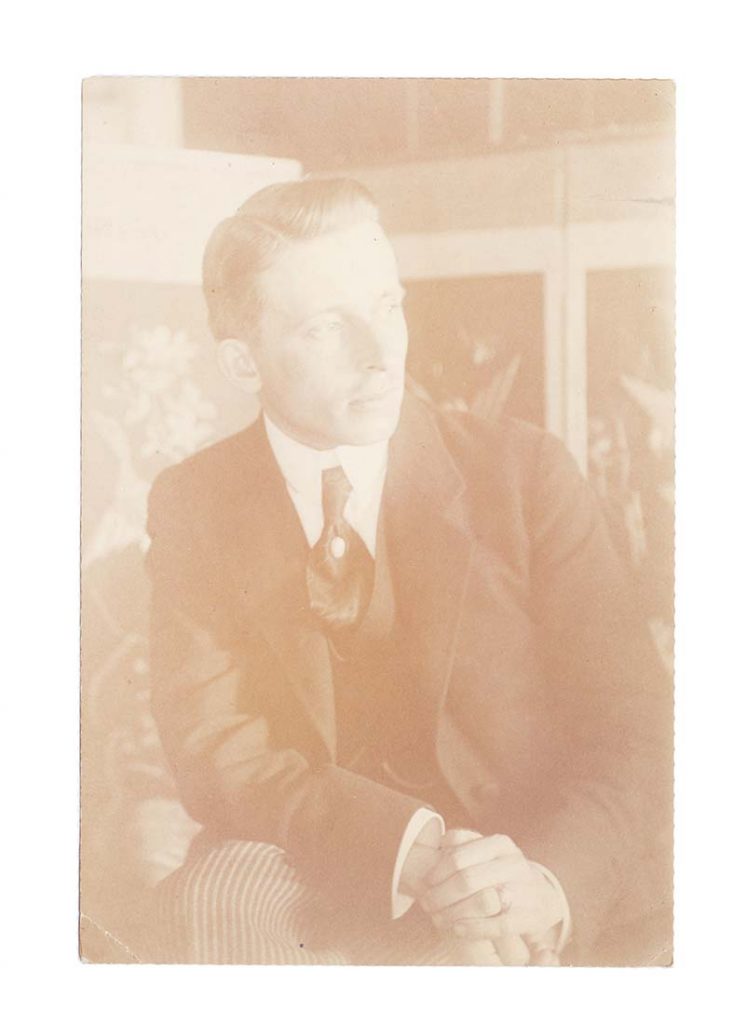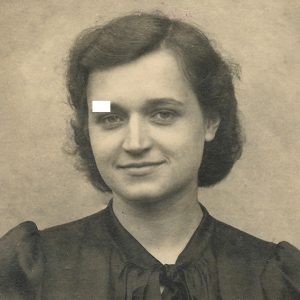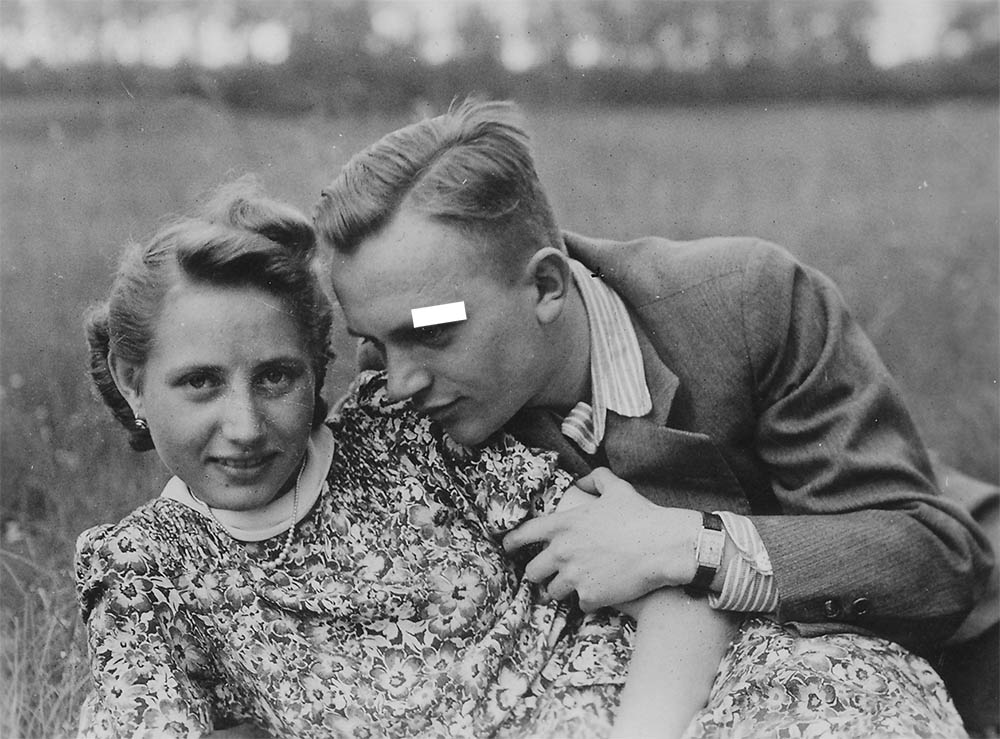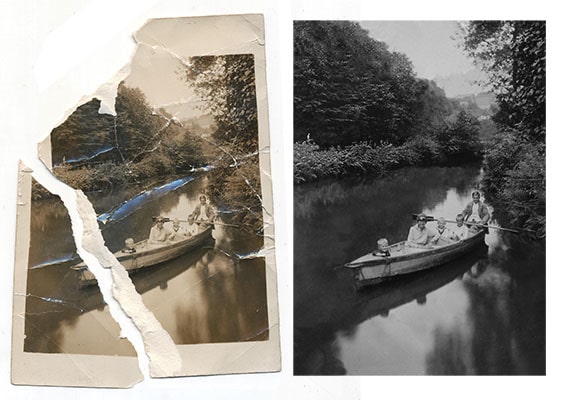
How to assess the damage of an old photograph
Understanding Damages
For us as a photo restoration service, it is essential to assess the level of damage of a photograph at first glance. Only this way we can keep our business profitable. Thanks to years of experience and highly trained professionals we can tell within seconds whether it’s possible to restore a photograph and how long it will take to repair it.
Most people don’t deal with these kinds of damages on a daily basis therefore it’s hard for them to asses the damage of their old photographs. In this tutorial, we like to introduce a very theoretical but crucial part of photo restoration: Damage assessment. We like to give you some rules of thumb to estimate the degree of damage to your old photos.
This will enable you to understand which photos have to be digitized first and which ones can wait. Furthermore, you will be able to understand whether an image can be restored at all and if you received a fair quote from a photo restoration service.
Learning from a Professional
Although technology has changed a lot within the last couple of decades, pretty much nothing has changed about how to asses the damage of an old photograph. It is still essential to understand the different kinds of damages and their impacts on the image. To fully understand those damages it is necessary to get an idea of how digital photo restoration works.
The key to understanding these damages is to understand them as distortion or loss of information. In this regard, it makes almost no difference whether the image is suffering from scratches, cracks, water damages or coffee stains. On a more abstract level, all these damages are altering the original information of the photograph. Photo restoration is the profession of restoring or substituting this altered information.
Types of Damages
We have learned that all kinds of damages can be understood as an alteration or loss of information in the original image. To understand how bad this alteration or loss is we have to asses the degree of damages. The size of the area is not necessarily determining the level of damage. We rather have to take a look at what kind of areas are affected and how they are affected.
I. Color Shifting or Bleaching
In general, a shift in the exposure or the color of a photograph is only an alteration of information. This means with the help of tone correction and gradation adjustments it is very likely that we are able to restore the original photo. When assessing these kinds of damages it is important to check whether the alteration is happening homogenously all over the image or if different areas are affected independently. A homogenous shift will always be easier to repair than individually affected areas. Unfortunately, this method only works within a specific range of color and exposure shifting. These alterations may have affected the photograph so much that the original information is no longer altered but already lost. If the information is lost there is no way to recreate it from the original image. However, there are ways to substitute it from other sources but we’ll talk about that later on.

When assessing bleaching and color-shifting check whether the affected areas still carry information. Even nuances matter. After that evaluate the importance of the affected areas to the image. Are they vital to the image? Or can they be replaced with information from other areas of the image? And last but not least, Is the alteration occurring homogenously?
II. Scratches and Cracks
Unlike bleaching, scratches and cracks are no alterations but the loss of information. This means that the information can not be obtained by editing this area. Therefore, the missing information has to come from another part of the image. Sometimes even from a completely different image. As long as these damages don’t affect highly detailed or unique parts of the image it is relatively easy to repair them.
When assessing your image always think about whether it is possible to fill the damaged areas with information from other areas of the image or if it is possible to retrieve the missing information from other images.
a) Non-Specific and Non-Detailed Areas
Let’s assume there is a large crack in the sky. However, the sky is homogenous. We can simply use information from other parts of the sky to fill up the damaged areas. These kinds of damages are relatively easy to repair.


b) Non-Specific but Detailed Areas
Let’s assume we have a portrait with a damaged right eyebrow. The only way we can obtain the missing information is by retrieving it from the intact one. The first thing we check is whether the perspective and lighting of the image allow us to use the left eyebrow as a blueprint for the right one. If it is possible to use this information we can start transferring the information from the left to the right eyebrow and blend it into the rest of the face. Small differences in perspective and lightning can be adjusted. These kinds of damages are still repairable but need more time, accuracy and experience.


c) Unique and Detailed Areas
Let’s assume we have a profile portrait and again one of the eyebrows is being damaged. As the image is taken from the side we have no chance of obtaining the information from any other part of the image. The only way we can somehow reconstruct the missing eyebrow is by finding an equivalent portrait of another person and use this information to restore the eyebrow. Now it becomes tricky. Even if we find a portrait that is photographed from the same angle and with the same lighting we still need an eyebrow that is similar to the original one. To be able to fix these kinds of damages you do not only need a large organized database of thousands of images but also a lot of time and experience.



This is the image we have used for substituting the information.
III. Torn Pieces
Torn pieces are often a combination of altered and missing information. When assessing the individual pieces check whether it’s a clear cut and the information is simply being split into different pieces. Always check whether the image is still complete. Simply put together all parts and check for missing information.

When scanning the individual parts make sure that none of the parts are overlapping and that every bit of it is touching the scanner’s surface.
Clear cuts for the most can be reconnected pretty easily. Things become a bit more complicated when the cuts are going through a highly detailed and important area of the image e.g. a face. Even clear cuts can be hard to reconnect as the edges of individual parts are often distorted.
If your image is being torn apart and has rough edges things become even harder. In this case, information is almost always missing. Here it is crucial to understand where exactly the image is being torn apart. Again, the worst-case scenario is a torn face or another highly detailed and unique area of the image.
IV. Missing Pieces
As you might have guessed the most complicated and time-consuming repair is the reconstruction of missing pieces. Whereas homogenous and non-specific areas of images can often be repaired, things become a lot harder when the damage occurs in the center of the image. In 70% luckily only the corners of an image are missing. These rarely carry crucial information about the image. Nevertheless, each damage has to be assessed individually.

In general, we can regard missing pieces as very large cracks. As we’ve learned earlier, this means that we have to obtain the missing information from other parts of the image or even from other images. This is why we at InstaRestoration always ask for various images when we receive a highly damaged portrait. If we have various photos of the very same person it is much more likely that we are able to restore that photo. We simply collect the missing information from the other photographs and add them to the damaged areas. Minor differences in perspective, lighting, and age can be out leveled with elaborate techniques of digital photo restoration.
Summary
When assessing the damages of your photographs you should always ask yourself these questions:
- What area is exactly affected?
- Is the information lost or altered?
- Is the area vital to the image?
- Is the area detailed?
- Is the affected area unique or can similar information be obtained from other areas of the image?
- Do I have other images that may contain similar information?
In general, faces are by far the most difficult subjects to restore. Humans are highly trained in recognizing the slightest deviation or misproportion in a face. This makes it twice as hard as every face is unique and we are very good at recognizing this.
First things first
When going through your family photo collection you should always check the deterioration level of your photographs. Are the damages occurring in non-vital parts of the image or are more vital and unique parts affected by it? Is the damage getting closer to an individual’s face? Then it’s definitely time to create a virtual back up of that photo. Remember, information that is lost is lost forever.
You don’t know how to create high-quality scans of your images? Check out our tutorial on “How to properly scan photographs.”
Understanding Quotes
If you like to understand whether a quote from a photo restoration service is adequate and fair you have to take into consideration how heavily the image is damaged. Use our provided rules of thumb to estimate the damage. Are vital parts of the image damaged? Is the damage affecting faces or other unique structures within the image? Is the information lost or just altered? By taking all these factors into account you can determine how hard and time-consuming a restoration of your photo will be. Of course, the longer it takes the more expensive the repair will be.
We evaluate your photos for free
You don’t want to spend ages learning how to evaluate the damages of photographs? No worries, our quotes are always for free and it only takes a couple of seconds to upload an image. Just send us your photo and within 24 hours we get back at you with an individual quote for repairing your photograph. Use InstaRestoration.com to try it now.